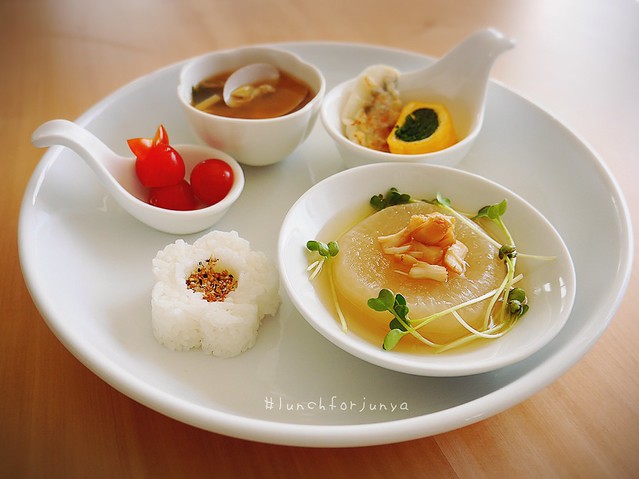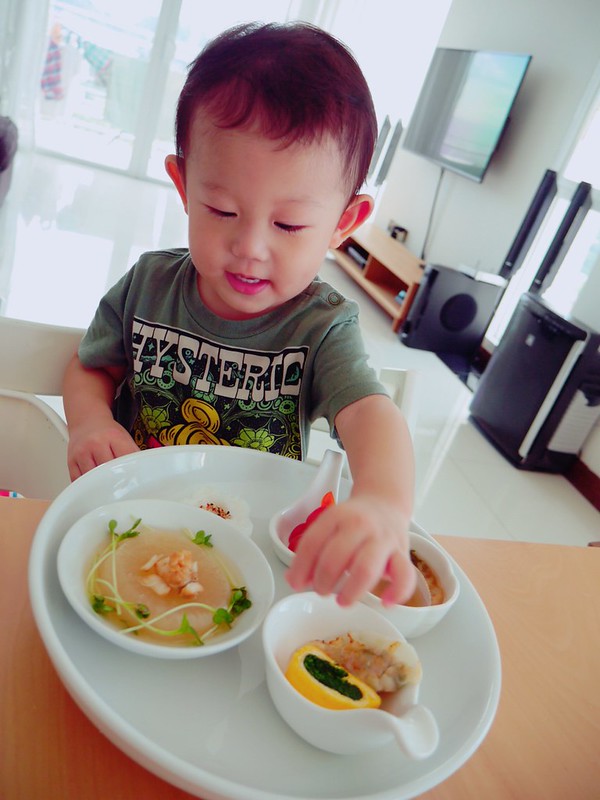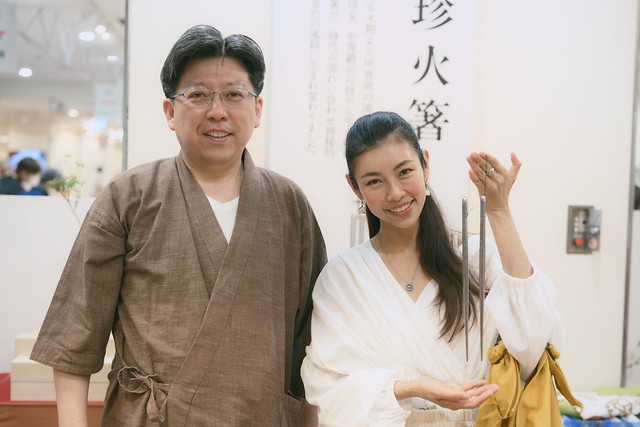Today i’m going to share the tips for making world-class simmered daikon that’s perfect for dishes like Oden, stews, and even daikon steak.
For those who don’t know, daikon (大根, literally “big root”), is a Japanese radish that’s available in winter season. It’s different from the pink radish the angmoh uses, so i’d stick to its original name “daikon”!
My family loves daikon for various reasons. The danna loves it because it’s low in calorie and great for diet. Junya loves it i guess because it’s soft and juicy, and that i am a great cook. I love it because, well, it’s daifreakingkon.
It will be in our fridge almost all the time and i guess i cook daikon at least 3 times a week!! I try to include other variety of calorie-rich food into Junya’s diet though, because daikon’s energy level is almost next to nothing, although it provides lots of other vitamins and minerals.
So!!
I decided to blog about this recipe because i have a story to share. It’s one of those “When Life Gives You Bitter Gourd” moments.
The danna and i went to Kamesushi in Sri Hartamas for their omakase dinner recently, and one of the dishes served was mini oden. I don’t have a picture, but the daikon in the oden was the most perfect daikon i’ve ever tasted.
It was cut in a perfect shape, looked shiny, crystal clear like a piece of jewel. I bit into it, like biting into jelly. No kidding. There wasn’t even a hint of fiber in it. It was soft, juicy with a burst of umami.
I told the danna, “this has got to be the best daikon i’ve ever tasted.”
He said, “really? You can easily make the same.”
And i was like no waaaaaay. IMPOSSIBRU!!!!
It probably takes the world most premium daikon and a super master chef to create this marvellous recipe.
“I don’t think so. Just google it – How to cook daikon“, the danna said, nonchalantly, like i was being ridiculous.
AND #CHALLENGEACCEPTED.
My new life mission is to cook daikon like a pro lol.
So i did. And indeed, i think i just found the secret to cooking world-class daikon. And that’s what this blog post is about.
You are welcome.
The thing is, i learnt that there’s no short cut to amazing things. Especially when it comes to Japanese food. WHICH IS WHY THEY ARE SO DAMN YUMMY. Yes a lot of time it is the ingredients that makes all the difference. But most of the time it is effort. If you are willing to put effort in things you do, it’s gonna turn out amazing. Such a simple logic, i can’t believe i didn’t adopt it earlier (in cooking, and in other aspects of life).
I call it The Daikon Theory. And it’s gonna be my new life philosophy lolol.
So. Here’s the cooking tips. It involves a lot of steps so it’s not for those who are looking to cook a quick meal. The alternative way to cook mediocre daikon is to peel it, cut it, and throw into whatever pot of stew/soup you have.
But here’s my Daikon Theory Recipe.
First of all, you need a good daikon.
STEP 1 : Get Good Daikon

Ideally i’d love to bring one of those gigantic daikon i saw in Japan back, but a Japanese daikon in local supermarkets will do. Although it costs like twice the price for half the size. I got my daikon from Aeon.
Selecting the parts of daikon:
Another important thing to note when you pick a daikon is the parts of it. The best part of the daikon is the middle part, since it has almost the same width, it will look aesthetically symmetricl and it will make great simmered dishes. I always wonder how Japanese combinis do it, because all the daikon in Oden is exactly the same size!!! If i pay the same money of course i want the biggest piece!! Haha
Anyway, the head could be used for salad, and the tail usually is more tangy, which is suitable for Daikon Oroshi.
STEP 2: Peeling

The flesh near the skin has a lot of fiber, so it will make the texture less desirable. When i watch a youtube tutorial, the chef cut away quite a big part (like 5mm-1cm) and only use the middle part.
Isn’t that a huge waste?!
I thought in my heart. Wait. I’ll get to that later.

After peeling off the skin, you can cut in into your prefered thickness. I usually prefer it quite thick so that it’s real shiok to bite into XD.
STEP 3: 面取り(Chamfering?!)
Ok i have no idea what it is called in English, but a quick translation tells me that it is called Chamfering (?), basically rounding the edge of the daikon.

This is a trick the danna taught me, i don’t know where he learnt all these from, maybe common sense? @.@ (Now i feel dumb.)
The logic for this step is to prevent the vegetable from breaking apart, especially when it comes to soft vegetables that crumble easy like potatoes in stews. You can easily use a peeler to “peel off” the edge and make it round.
So……
EXTRA STEP: No wastage
You end up with a lot of wasted daikon pieces right? With all the thick peeling and “chamfering”.
Remember the Mottainai concept? Yes sometimes you have to sacrifice to make the best cut for best quality, but it doesn’t mean the rest will go to waste.

These are the shaved off edges, it’s a good size for daikon salad, or you can just add seasoning to make it into asazuke (daikon pickle). Never waste your food!!
STEP 4: Kakushi Ho-Cho (Scoring)

Man i learn so many new cooking lingo today. Scoring means making shallow cuts across the surface of a vegetable or meat to allow better absorption of a marinate/dashi.
In this case i make an X cut about 1/3 the height of the daikon. I only cut it on one side so that the other side remains intact and beautiful for presentation.
STEP 5: Parboiling (with rice water)

This step is negligible because it is so troublesome, but it also makes a whole difference to the out-of-the-world-ness of the daikon. I never skip this step ever again after knowing what magic it does to the daikon!!!
Basically the rice water is the water you usually throw away after washing your rice. DON’T THROW AWAY. Save it for your precious daikon. If you are not cooking rice on that day, you can just use normal water and put a small spoonful of rice and boil together with the daikon.
The reason for this step is that the chemical reaction between the rice water and daikon will give the daikon a sweeter taste, and parboiling will also remove the harshness of the daikon.

Boil it until it is soft enough to be pierced through.
STEP 6: Cooling
Now your daikon has a beautiful translucency to it.

Yes i know everyone is very anxious to quickly complete the cooking and eat your daikon now. Not yet.
Let the boiling hot daikon cool down before you do anything else. Yes, patience. If you can’t wait, you can cool it in a bowl of ice water.
The reason for this step is that when the daikon is cooled down, it absorps the flavor even better, so cool your daikon before adding any dashi stock.
STEP 7: Double Boiling with dashi stock

I use lots of water, and a pack of bonito dashi, using a slow cooker. If i am in a rush then i’ll use a pressure cooker. But generally low temperature over a long time will work better!
Usually if you are suuuuuuperrrrr free, or wants to be a Daikon God, you can cook your daikon until it boils, then switch it off, then boil it again and let it cool down, repeat the steps. It’s the same logic as Step 6. Which is the reason why overnight daikon tastes so much better than freshly cooked daikon!!
STEP 8: Flavoring
Basically after step 7, your daikon is complete. Step 8 is the arrangement of the dish.

For me i let the daikon rest a bit, and then take it out to a frying pan, add half of the dashi soup and thicken the dashi a little with corn starch, so that it gives the beautiful pearly coating for the daikon and a better textured soup. If your dashi is too bland, this is the time to add flavorings like Shoyu or Tsuyu.
STEP 9: Garnishing
I’m making Daikon Steak, which means the daikon is the hero of the day, so it needs to be pampered like a superstar.
Lunch For Junya:

This is JunJun’s lunch. The arrangement is Daikon Steak in thick dashi, topped with scallop (which i boiled together in the dashi soup).

And then you slice the daikon with a knife and omg………. the texture. T___T
So. So. So. Satisfying. T___T. It’s like cutting into a juicy piece of Wagyu. The entire piece of daikon is simmered with flavorful dashi. Subtle yet rich in umami, with a natural sweetness and zero bitterness that usually comes with daikon.
Mama’s Lunch Version:

Mama’s version is topped with Kaki Shoyu (Oyster Soy Sauce) and Bonito Flakes over dashi.
STEP 10: Savor with LOVE
Remember? Itadakimasu.
Thank you, farmers. Thank you, daikon. Thank you, the person who shared the cooking tips. Thank you, super chef me.
Thank you JunJun, for loving it so much and making me so happy.

My new found happiness is called The Daikon Theory. It’s all about effort, and love. Yes it was time consuming. But all worth it.
Itadakimasu.















Looks yumz 😋 daikon in oden is 😋😋
Btw Cheesie are you in Malaysia or SG now?
I am back KL 🙂
Totally gonna favorite this page.
Daikon is super yumz! Thanks for the tips!
Thank you and welcome!!!!! 😀
Thanks for this Cheesie! A Japanese youtuber Ochikeron showed how to do this but she only did up to step 5 or so for oden, the extra steps are great I can’t wait to make daikon steak! The mentori is called planing the edges in English but chamfering is much funnier!
Planing the edges!!!! ok i’ll remember it XD
ahh omg cheesie, i’ve been a reader of yours for very long and fell in love with daikon because of you!! i always always eat oden in japan & whenever i go into the combini and scoop the daikon i never fail to think of you 🙂 i also make my own oden and soups for the past few years but THIS POST is amazing. such a game changer!!! now i can make super soft, super yummy daikon too. thanks so much for this cheesie!!! my daikon will never be bitter again and i super appreciate it <3
really? I’m so happy to hear that!! 😀 Let me know how it goes!!!! 😀
Aww . Junya is really good at feeding himself!!!!
Hahaha daikon only!! XD
Cheesie, you are truly becoming a Japanese housewife – amazing daikon and the plating of JunJun’s lunch!!! Looks amazing. 🙂
Nooooooo not even near!!!!
Really in love with your cooking tips and recipe! I love daikon so much too~~!! My Japanese BIL used to told me that the peeling method of daikon plays an important part. After reading your post, I’ve better understanding, although it’s very time consuming, but every steps has their own reason! Cant wait to try ur method~~ #aimtobecomedaikongod lol
Please let me know how it goes!!! 😀
Hi cheesie, can i check what bonito dashi pack u are using??
I am using some random one i bought from Japan! You can actually use any dashi pack, the one sold in Malaysia is usually powder type, that will do too!
a whole post on daikon OAO
and the ending looks like it came out from a 5 star restaurant.
#winliao
Hahhaha #FilterWins
Thanks for sharing the recipe and tips! Love reading your blog entries! My boy is a few months younger than Junya and I love to see your posts for inspiration whenever I run out of idea what to cook. Also, my husband loves Japan, and I love Japanese food too! Will attempt to try out this recipe when I’ve got time! 😄
I’m so happy to know! Pls let me know how it goes! ^^
Interesting!! Thank you for sharing 🙂 Now I just need to look for some Daikon here…
Hope you find it!!! ^^
I think junya is very calm and cute boy, my boy jumping here and there in eating time T_T. I always like your blog, theres decent and nice thing to read here…the other blogger put too much harsh word and love to fight. You make me want to live in Japan even more with all the japan post and foods. T_T. Keep it up!
thank you so much!!! I hope you find more and more amazig things and experience in Japan!
I see you cut daikon with knife sharp edge pointing to you. I see Japanese and Korean do like that.
But my Chinese family don’t do that. But i never see other Chinese family how to cut something so..
Do you learn how to cut like that after you learn Japanese culture? Or your family cut like that?
Hahhaa my question very not important hor. But i just wonder coz when i tried to cut like you, it is so hard for me. Hahaha
But i see my Korean in law cut it very easily and smooth. So i wonder!
Actually i still not confident to do it that way. I ended up using a peeler lol.
Thanks for sharing this awesome recipe. I agree; cooking yummy food at home requires love & effort.
OMG Cheesie, I’m never really a daikon fan because of their taste but after I tried the recipe, I’m hooked. I never tasted daikon so sweet and juicy before. And u r so right. Taking a big bite on juicy sweet daikon steak is so heavenly satisfying. Thank you for sharing 😍
Hi cheesie! Would you mind sharing to us on how to make dashi? Or which product we could buy to make dashi? Thank youu. Or maybe miso soup?? hehe
Tried out your method of cooking daikon on Saturday and I must say your recipe is really wonderful! Thanks for sharing your tips and tricks in making delicious daikon!
Thank you so much for sharing your experience! I am so glad you liked the recipe 🙂
Hi Cheesie!
Am planning to try out daikon with your receipe. Can i also know after step 7 if we can store and keep for future usage? Shld it be by freezing or normal cold fridge? Weekend is the only time i can prep food for the week so knowing this will help lots. TIA! =)
Yes you can store it. Freezing is ok too. 🙂